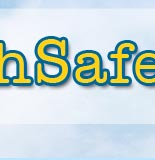REDUCING BULLYING: MEETING THE CHALLENGE |
“Everyday, over 52 million children attend 114,000
schools in the United States, and when combined with
the 6 million adults working in schools, almost
one-fifth of the population in the U.S. are to be
found in schools on any given week”
(Huang et al. 2005, p.623.) |
| INTRODUCTION |
|
Click on the Icon to download the BULLYING PDF document |
 |
|
Bullying in schools is a frequent and serious problem that is often a precursor of aggressive and violent behavior. Schools, in concert with parents and community members, can significantly reduce bullying behavior. |
This section of the website is designed to provide practical guidelines on how to reduce and prevent bullying behaviors. The practical "how to" guidelines are presented in six dropdown MENUS and also in the FREQUENTLY ASKED QUESTIONS. |
|
| |
Before we consider the specific practical suggestions a brief historical perspective on bullying interventions and a consideration of the general lessons learned from these past interventions will be presented. We conclude this introduction with a checklist of the key components of a bully prevention program, so one can see where specific practical suggestions fit into the "big picture." |
| BRIEF HISTORICAL PERSPECTIVE |
The first major anti-bullying intervention program in schools was conducted in Bergen, Norway in 1983 by Dan Olweus. This program was introduced following three suicide deaths of boys ages 10 to 14 year-old, who had each been severely bullied by their peers.
In the initial Olweus intervention program there was a reduction of up to 50% in bullying behavior. This change was maintained after two years of the intervention. There was no displacement from bullying at school to bullying on the way to and from the school. Moreover, the results revealed more positive pupil relationships and a significant drop in rates of vandalism, theft and truancy.
|
Since 1983, bullying prevention programs have been implemented in 11 countries and on three continents.
We can now ask: |
- What are the lessons that have been learned from these many anti-bullying interventions?
How can my school can benefit from these lessons?
|
- What are the core elements of a bullying prevention program, and how can we implement and evaluate such interventions?
|
LESSONS LEARNED FROM PREVIOUS EFFORTS TO IMPLEMENT
A BULLYING PREVENTION PROGRAM |
| Lesson 1. While there is considerable evidence of success in the actions of schools against bullying, the level of success varies greatly between schools. Those schools that did the most, achieved the most. |
| Lesson 2. The leadership by the principal or head teacher and administrative commitment are critical to the success of a bully reduction program. Consider the following observations offered by leading researchers in anti-bullying: |
“A principal can influence the staff’s attitudes and behavior by putting anti-bullying work in the school’s
official agenda, initiating plenary meetings with staff and parents, and providing clear guidelines
about the organization of the supervisory system during break periods. It is important that the
principal allocate time and financial resources to such activities”
(Dan Olweus, 2004, p. 32.)
|
"We believe that without the commitment of the leadership and staff,
the anti-bullying program would not get off the ground"
(Pepler, 2004, p. 126 - leading Canadian researcher on bullying.) |
“A necessary prerequisite to the effective implementation of a Bullying Prevention Program
is the commitment of the school administrator (principal) and a majority of school staff to
addressing problems associated with bullying"
(Limber et al, 2004, p. 66 researcher who brought Olweus’ anti-bullying program to the U.S.) |
“Administrative commitment to the classroom meeting concept proved particularly crucial
in our middle schools, as the principal needed to approve changes to the students’ schedules
and creatively encourage teachers to hold such meetings”
(Limber et al, 2004, p. 69.) |
“As would be expected, the principal’s involvement was pivotal to the success of the
project’s implementation, particularly the whole-school activities. The promising gains in policy
implementation initiatives were made in intervention schools where the principals attended the
training and were actively involved in their whole-school committee”
(Cross et al, 2004, p 199 – researcher who created the Friendly Schools project in Australia.) |
| In short, bullying prevention programs are unlikely to be effective without the commitment and investment of the principal. |
| Lesson 3. "Successful school-based interventions for bullying depend on teachers and principals
to create a climate that discourages bullying and encourages peer processes that
support and include vulnerable children. Teachers should label bullying behavior, not
the person. Identify the problem as bullying behavior and avoid labeling children and
youth as "bullies and victims." These labels limit how they think about themselves
and how others think of them." (Pepler et al, 2004, p.311.)
|
| Lesson 4. “Only with consistent sustained effort (at least two years of intervention) is the incidence of bullying and related behaviors likely to be reduced. It takes more than six (6) months to effect change in bullying problems in elementary schools.” (Pepler et al, 2004.) |
| Lesson 5. Anti-bullying efforts cannot be separated from the core tasks of effective teaching. Teachers who are engaging and who have good classroom management skills have less problems with students’ bullying behaviors. Academic progress increases when schools work to improve the quality of teachers’ classroom management and positive behavior discipline techniques. High student engagement reduces bullying opportunities. |
| Lesson 6. “It is difficult at this stage to identify the crucial elements in the anti-bullying programs or to say which programs are most effective. Most of the programs to counter bullying have resulted in a degree of success, at least on some outcome measures. This is encouraging."
(Rigby, Smith & Pepler, 2004, p. 2.) |
| Lesson 7. “There is a greater likelihood of success of anti-bullying intervention programs at younger primary grades
(e.g. kindergarten to grade 4) than with older middle and secondary students. Changes in anti-bullying attitudes and group norms are more common in younger students who are more likely to respect the authority of teachers. Research on the stability of victim and bully status suggests that few pupils enter into stable roles before 8 to 9 years old." (Rigby et al, 2004.) |
| Lesson 8. “At this stage in the development and refinement of bullying interventions, the research is not at the point where we can reliably point to specific elements of interventions that are known to be the active and essential elements associated with change.”
(Pepler, 2004, p. 313.) |
Lesson 9. Hazler and Carney (2006) propose that effective bullying prevention should:
- involve diverse groups in the planning and implementation of the program;
- increase initial awareness by bringing the problem of bullying to the surface and foster empathy by focusing student and staff attention on the feelings of all participants in bullying;
- implement policies that create nurture pro-social behavior;
- foster skill development in which perpetrators, victims and bystanders are targeted with a wide array of social skills training;
- nurture continuing staff involvement that keeps the issues, changes, problems and necessary actions alive for ongoing discussion;
- conduct assessment of progress and adjustment of effort
|
| Lesson 10. There are no "magic bullets, nor quick fixes". True success requires extensive coordinated and sustainable efforts. A successful anti-bullying program is an ongoing,
rather than a one-time only program. |
| With these lessons in mind, we can consider the core elements of any anti-bullying program. All too often, bully reduction programs are implemented in a short-term fashion, with some staff members enthusiastically advocating one aspect of the intervention (e.g.; use of role-playing and videotaping of students in high risk settings, or changes in supervision patterns, or implementation of a school wide anti-bullying curriculum.) |
| How many of the following core elements does your school implement? |
A CHECKLIST OF KEY COMPONENTS OF A BULLY PREVENTION PROGRAM |
A. At the Principal’s Administrative Level
- Familiarize administrators and school staff with specific schools laws and school district policies relevant to school violence, bullying and sexual harassment. Provide enforceable legislation that clearly defines that every student has the right to a safe school environment.
- Demonstrate leadership commitment to reduce bullying and sexual harassment as serious school violence issues by providing resources and training, as well as reducing barriers to anti-bullying interventions.
- Establish a school safety committee of six to eight (6-8) key personnel (e.g., school administrators, preferably principal or assistant principal, teachers representing different grade levels, school staff such as bus drivers, recess monitors, parents and community members) who meet regularly. The committee considers ways to anticipate and address possible barriers that might interfere with the implementation of the anti-bullying program (e.g., attitudinal, personnel, resources, leadership barriers).
- Assess on an ongoing basis for the incidence, type and impact of bullying,
harassment and gang activities using input from multiple sources (e.g.,
students, staff, parents, community members) and utilizing multiple measures
(e.g., survey, interviews, observations). Administer an anonymous
questionnaire to assess the nature and extent of bullying in your school.
- Review evidence-based programs to identify one that best fits your school's
particular needs (e.g., grade level, severity of behavior problems, time
commitment, available resources and personnel).
- Establish and maintain a confidential reporting system of bullying incidents
and the consequences for children who bully, victims of bullying, and
bystander activities. Keep in mind that bullying is a group phenomenon.
- Implement anti-bullying interventions on various levels including; a primary
prevention school-wide level; an indicated secondary prevention level with
"high-risk" students; a selected tertiary prevention level with students and
families who require more extensive wrap-around services. For example, middle and high school personnel conduct early screenings and proactively identify high-risk students from feeder schools. Those students who have needs beyond the school's capacity, require clinical support from community agencies. There is a need for flexibility and resourcefulness.
- Collaborate with staff to establish doable, obtainable and measurable school goals and objectives for bullying prevention. Create a public relations campaign to make these known to the school population, parents and community members. Nurture awareness among staff of what the school wants to change.
- Continually monitor and evaluate progress toward achieving goals and adjust
interventions accordingly. Use data-guided decision-making and systematic
follow-ups.
- Establish a whole school-wide anti-bullying policy and anti-sexual
harassment policy. Define what is considered bullying behaviors. Develop clear school-wide rules and consequences against bullying; making it clear to all students that bullying will not be tolerated. Include these policies in the school's Mission Statement, Code of Conduct and Bill of Rights.
- Create a positive school climate where all students feel welcomed and
connected with school personnel. The school atmosphere should be
characterized by a warm, adult involvement, firm limits, and high
expectations that respect cultural diversity. At the class level, nurture a
climate of positive cooperative relationships between students and teachers,
and among students. For new students, the school should have a welcoming program. Provide an adult mentoring program for students who are "marginalized". Administrators should be careful not to bully their staff.
- Disseminate information about anti-bullying policies, reporting forms used
for assessment and critical incidents, intervention and evaluation plans by
such means as staff meetings, assemblies, drama presentations, class and
parent meetings, letters home, school website and student handbook.
- Build anti-bullying material into the entire curriculum and school activities.
Implement curriculum-based, class level discussions and activities against
bullying (e.g. role-play activities) to be conducted in an age-appropriate level
for each grade level.
- Educate school personnel, students, parents and community members about
bullying (e.g., different forms; distinction between playful teasing and joking
and negative hurtful teasing and bullying; how bullying is a group
phenomenon and a relationship problem; the role of bystanders and how they can help the victims of bullying or ways to seek adult help). Include related discussions on the topics of racism and sexism. Extend this discussion to parents and proactively involve parents.
- Provide explicit training and ongoing supervision to teachers delineating how
to identify, report and intervene in bullying episodes. At least two full days of
training, ongoing personal consultation and telephone consultations should be
provided to key personnel. A school needs an on-site coordinator who
is committed to the bullying prevention program.
- Alter supervisory patterns so adults are visible and available at "hot spots"
where bullying may occur. Bullying is lower where there is high supervision
by adults.
- Promote playground activities that reinforce prosocial interactions. Work
with recess supervisory staff. Teachers are more likely to intervene in bullying
episodes that unfold in the classroom as compared to the playground context.
|
B. At the Classroom Level
- Establish class rules that promote good social skills and reduce bullying (e.g., Respect other students. Try and help students who are bullied. Include students who are left out. Provide help. Get help.)
- Use regular classroom meetings (at least once a week) to discuss bullying and
ways to get along with others.
- Improve the quality of day-to-day classroom management. Use democratic principles and nurture respect.
- Use adjunctive procedures such as role plays, story circles, creative writing, peace gardens and peace assemblies, as a means to discuss what could be done about bullying and victimization.
- Emphasize examples of the "Fourth R" for relationships by using such activities as videotape role-plays of "high-risk" situations students may encounter.
- Define and demonstrate empathy as fundamental to interpersonal relationships in order to reduce bullying behaviors.
- Provide access to library materials where there are books about bullying.
- Show videos about bullying as a catalyst for class discussion.
|
C. At the Classroom and Counselor Level
- Train students in bystander intervention on how to become a courageous
bystander" by speaking up for victimized and vulnerable students or getting help from adults.
- Arrange for “marginalized” students to be welcomed and accepted.
- Provide direct one to one (1:1) discussions with children who bully and victims of bullying (also bully/victims.) Meet with the student who was victimized first and obtain a picture of what happened. Then meet with the student who bullied and other involved students, separately.
- Consider the range of options from least to most intrusive with students who bully. Interventional discipline is intended to redirect the student's bullying behaviors into prosocial relationship skills.
- Meet with students involved in a bullying incident individually (e.g.; see Pikas, 1989, Method of Shared Concern.)
(a) Meet with students.
(b) Send students to administrator’s office.
(c) Contact and meet with parents.
(d) Refer student for training within the school system—empathy training, conflict resolution skills, social problem solving.
(e) Refer students and families to community-based services.
(f) Take administrative actions (in-school, out-of-school suspensions, transfer to special setting, expulsion.
(g) Monitor effectiveness of the interventions.
- Provide training for victims of bullying including assertiveness training, friendship-building skills, self-enhancement skills, and negotiation skills. Involve parents as part of the training. Create a Circle of Friends and identify supportive staff members. “Is there an adult in the school building to whom you could turn to for help with your problems?”
- Keep in mind that children who fit the category of bully/victims (children who bully others and are also victims of bullying) are most high-risk for psychosocial problems.
|
D. At Parents and Community Members Level
- Disseminate information about bullying to parents and actively engage them in the program. (Most instances of bullying are reported to parents and not to school personnel. But less than 1/3 of parents usually attend school meetings and these parents are not usually the parents of children who bully.)
- Highlight ways to communicate with school personnel (e.g., have a parent information night, establish a parent committee; see Project LIFT- - home-school communication system).
- Meet with the parents of children who bully and victims of bullies.
- Engage community members (e.g., interested citizens, members of media) to
develop resources and support for anti-bullying programs.
|
| The remainder of this section of the TSS website on Bullying Prevention is designed to provide specific practical information on how to implement each of these core elements. |
| Click on the Icon to download the BULLYING PDF document |
 |
|







